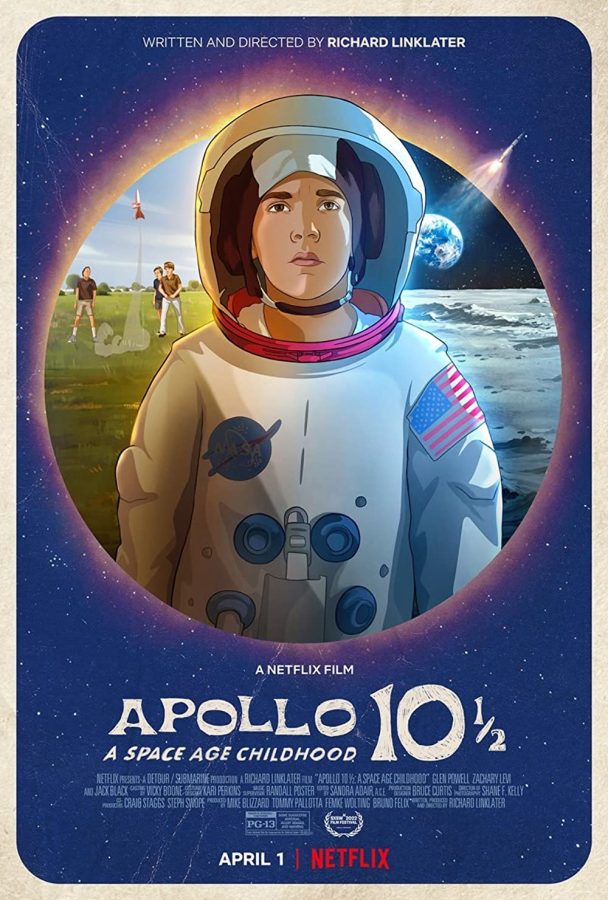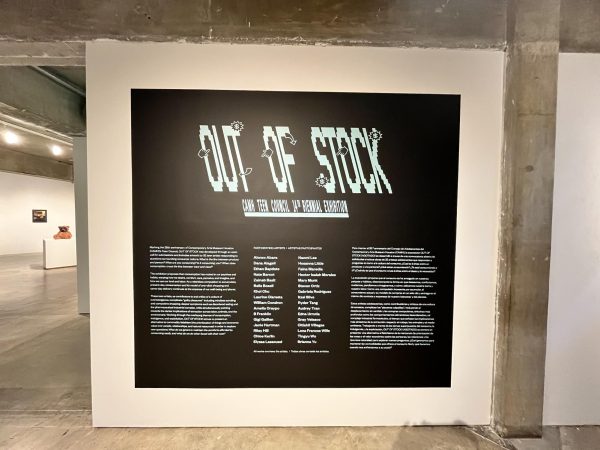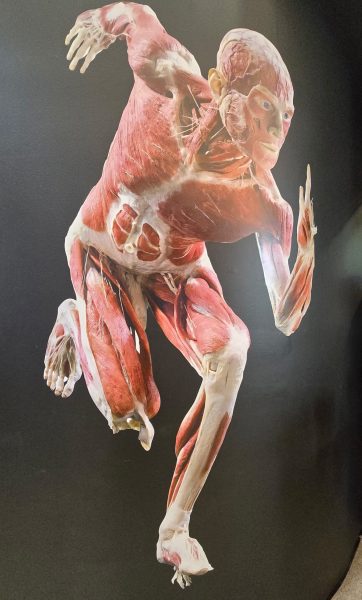Apollo 10 ½: A Flawed but Admirable Attempt at Capturing Houston On Screen
The poster for Apollo 10 1/2: A Space Age Childhood depicts the two sides of its main character, Stan.
“Why haven’t there been any high-profile movies about Houston?” was the question on my mind as I went on Netflix and searched for Apollo 10 ½: A Space Age Childhood. Yes, yes, Terms of Endearment and Boyhood have both touched on life in Bayou City, but they explore relatively few aspects of what makes the city unique and also have many different settings, not just Houston. I wanted to find a film that captured Houston as it is: this crazy, dare I say beautiful mess of a city. Apollo 10 ½ was not that movie, but it still managed to depict a version of Houston most of us can appreciate: a Houston of the past.
In Apollo 10 ½, which is an animated film set in the days leading up to the Apollo 11 Moon Landing, 10 year old Stan (voiced by Milo Coy) lives in a Houston suburb near the Space Center. Because of his high grades and skill at playing playground games, he is recruited by two shady NASA officials (voiced by Glen Powell and Zachary Levi) to become an astronaut, because NASA accidentally built a lunar module in the wrong scale. This is of course all make believe, and it is really a vehicle to demonstrate Stan’s feeling of being part of the real Apollo mission. He, like everyone else at the time, is aware of Houston’s central role in the Space Race, and wishes he (or his family) could be a bigger part of the mission. He is also engrossed in the culture of the time, which is absolutely obsessed with space. The idea of putting Stan in the center of everything works, but the film never truly embraces this fantasy, creating a strange narrative with two versions of Stan instead. On one side, there’s the “astronaut” version of Stan, and on the other, there’s normal Stan, acting as a bystander. By the end, the two versions are somewhat reconciled. An adult Stan, voiced by Jack Black, narrates the movie, tying the choppy memories and fantasies together and providing details on what life was like in the 1960s: what people watched, what they thought about Vietnam and Kennedy’s assassination, what they ate, what they learned, what music they listened to, and the games they played. With all of this information crammed into a little over 90 minutes, the film almost feels like a documentary.
I am a third of the way into the movie when I pause and think- something about the film feels off. I admire the attention to detail and the desire to capture a period in time, but the movie still hasn’t clicked together. Something is missing. The places I see are familiar, Stan’s experiences are familiar, but I can’t relate to the film. Maybe it’s because I never grew up in a big family in the suburbs, or maybe it’s because I’m not originally from Houston, but the film still feels slow, choppy, and at times distant, yet so familiar.
Places Houston locals would know, like the Astrodome, Ellington Field, and UH are mentioned or depicted. Even historical footage is animated, creating this vibrant, vintage world that captures the childlike sense of wonder Stan feels about the Space Program. The issues faced by Houston at the time, like desegregation, gender inequality, and the war in Vietnam, are far away from the narrative and the main character, although they are mentioned occasionally. Perhaps this is because the protagonist is a child, or perhaps because the family lives in the suburbs, away from the chaos of the city.
I keep watching. The movie picks up some momentum as the days go by and we get closer and closer to fateful evening, when man landed on the Moon and the possibility of a space-faring civilization just became a bit more tangible in the imagination. Stan gets farther and farther in his training to be an astronaut. The movie speeds up, pushing through more aspects of mid-century life, until we get to the final, life-changing day: the day humanity lands on the moon, and for a quiet, transient moment, looks back on itself. But Stan landed on the Moon, in his mind, quite a while ago.
It’s important to note that Houston was never a particularly peaceful city. In the 1960s, it was the epicenter of technological development and innovation, but it still had some of that conservative, old-fashioned, Western lifestyle. The movie captures this conflict well, though it fails to capture other aspects of Houston that make it unique. It captures a Houston of the past, not my Houston. Maybe that is the problem I noticed earlier. Maybe it should have focused on a Houston that today’s audiences would be more familiar with, or at least reconciled the two cities somehow. But is that the point? Maybe not. Other critics have noted this too, but Apollo 10 ½ is not about a story or depicting a city exactly as it is. It is more about depicting a life lived. Director Richard Linklater (of Boyhood and Dazed and Confused fame) allows us to peer into a bygone era for an hour or two, presents things that were important to him, and just lets us appreciate what we find. It’s certainly not the entertaining, engaging experience that draws crowds (and Carnegie kids) to theaters. But that doesn’t mean it’s dull. And there are moments we can all enjoy.
For example, on the day of the landing, Stan’s father takes the family on a trip to Astroworld, the now-gone amusement park that entertained hundreds of thousands for nearly four decades, though people may now remember it as the namesake of an annual music festival that ended in disaster last year. The movie slows down, presenting the park to us as something kids cherished, showing us the ins and outs, teaching us the tricks you need to employ to get through all the rides in one day, and even taking us along for one of the rides. Then, the kids return home, tired, and sit in front of the TV and wait for the lunar module. Lanier Middle School alum Walter Cronkite is there to interview NASA officials and explain everything to us as the broadcast is intercut with Stan following landing procedures for his own Moon landing. This allows us to see the Moon through historical footage and through the first-person perspective of a child, blending fantasy and reality, and color and black-and-white imagery. As Stan falls asleep watching the men walk on the moon, we fall deeper and deeper into his dream, and the soundtrack becomes more alien and yet nostalgic, and the narration more thoughtful. The film ends as Stan’s parents take him to his bed, remarking that even if he slept through the Moon landing, he’ll remember that he actually saw it happening, and Stan, on his Moon mission, climbs back into his mini version of The Eagle and sets off back to Earth.
At its core, Apollo 10 ½ is a fun and educational dive into a childhood well spent, and you get to see some stuff you might recognize along the way. It’s not a perfect film, and nor is it a perfect depiction of Houston, the most diverse, most wacky major city in America, but it’s an admirable effort nonetheless and definitely a step in the right direction for Hollywood. Perhaps in the future, Linklater or some other visionary filmmaker will give us a real celebration of modern Houston, flawed as it is, told through the perspective of someone who lives in it, who breathes its air, and who loves its unique cultural landscape.
Your donation will support the student journalists of Carnegie Vanguard High School. Your contribution will allow us to cover our annual website hosting costs and fund field trips, competition fees, and equipment. We appreciate your support!

I love reading, learning, drawing cartoons, watching films, and discussing art, history, politics, and business. I also collect historical artifacts,...







